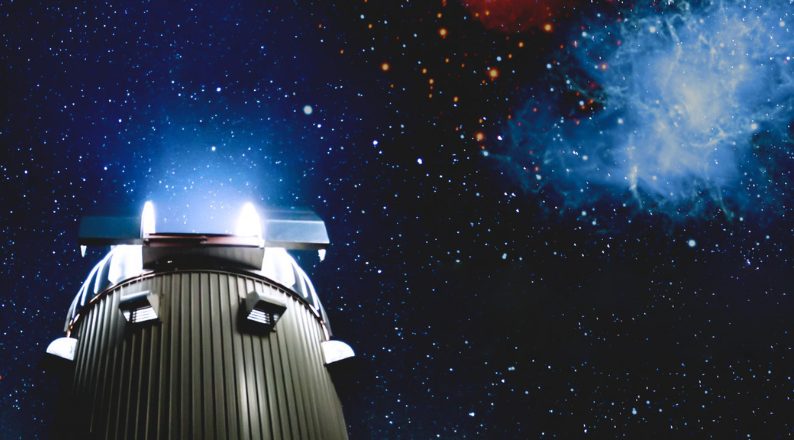(ZENIT News / Castelgandolfo-Vatican City, 03.21.2023).- Astronomers from the Leibniz-Institute for Astrophysics Potsdam (AIP) and the Vatican Observatory (VO) teamed up to spectroscopically survey more than 1000 bright stars which are suspected to host their own exoplanets. The team — which includes VO astronomers Fr. Paul Gabor, S.J., Fr. David Brown, S.J., and Fr. Chris Corbally, S.J., and VO engineer Michael Franz — now presents precise values of 54 spectroscopic parameters per star in the first of a series of papers in the journal Astronomy & Astrophysics and releases all its data to the scientific community. This unprecedented large number of parameters will be essential to interpreting the stellar light and finding connections between the properties of stars and their possible planets.
Stars tell stories about themselves, and sometimes about their undiscovered planets. Their language is light. Starlight reveals many physical properties of a star, such as its temperature, pressure, motion, chemical composition, and more. Researchers analyze the light with a method called quantitative absorption spectroscopy. To do this, telescopes capture starlight and spectrographs break it down by wavelength into a rainbow-like spectrum which is the star’s fingerprint of light. When astronomers know these parameters precisely, they can use them to test their theoretical models of stars. This often reveals that the models have some shortcomings, or that observations of stellar spectra are still too imprecise.
But sometimes, it reveals that a star has a surprising story for astronomers. That is what motivated this team to carry out an ultra precise survey of possible planet-hosting stars. “Because stars and their planets form together, the question arose whether the existence of certain chemical elements in a stellar atmosphere, or their isotopic or abundance ratios, is indicative of a planetary system,” explains Prof. Klaus G. Strassmeier, lead author, director at AIP and principal investigator of the survey.
Astronomers have hypothesized that the amounts of different chemical elements within a star could hint that the star has terrestrial planets (rocky worlds like Earth or Mars), could suggest ages for those planets, and could even provide clues that the star has “eaten” some of its planets. This needs to be further investigated and the data now published form the basis for this.
Of the over 5000 confirmed exoplanets (planets orbiting other stars than the Sun), 75% were discovered from space by observing the light of stars being reduced because of planets passing in front of them. NASA’s Transiting Exoplanet Survey Satellite (TESS) mission discovered exoplanets just this way. It yielded more exoplanets when observing those parts of the sky furthest from the ecliptic (the plane in which the Earth orbits the Sun), called the ecliptic poles.
Observatories in the northern hemisphere can observe the northern ecliptic pole, and this survey of potential planet-hosting stars within this region is named the Vatican-Potsdam Northern Ecliptic Pole (VPNEP) survey.
The survey concentrated on the richest observing field of TESS, an area of the sky approximately 4000 times the size of the full moon. All approximately 1,100 potentially planet-hosting stars in this field were investigated. Up to 1.5 hours of telescope time was required to catch enough of a star’s light to make a single high-quality spectrum. With several visits per star, it took five years to finish the survey.
The survey used telescopes at two sites: In Arizona, the VO’s Alice P. Lennon Telescope and Thomas. J. Bannan Astrophysics Facility (Vatican Advanced Technology Telescope or VATT) fed light to the AIP’s Potsdam Echelle Polarimetric and Spectroscopic Instrument (PEPSI). These recorded spectra of smaller stars with unprecedented precision. On Tenerife, the AIP’s STELLA (StellTELLar Activity) Observatory used the STELLA Echelle Spectrograph to capture light of giant stars with lesser, but still high, precision.
Dr. Martina Baratella, one of AIP’s postdoctoral researchers involved in the survey, comments: “The spectra revealed elements that are among the most difficult to observe.” Abundance ratios like carbon to iron or magnesium to oxygen hint towards the existence and age of otherwise unseen rocky planets.
Prof. Strassmeier adds: “While it will take time to fully analyze the data from the survey, we expect soon to announce subsequent discoveries.”
Fr. Gabor remarks: “Auguste Comte, the founder of French positivism, once wrote that we would never know what stars were made of. He did not know that starlight carried the ‘fingerprints’ that would be able to tell us so much about stars. Creation appears to be made to allow us to understand it—a parallel to what biblical revelation tells us about how God wants to be known.”
The key areas of research at the AIP are cosmic magnetic fields and extragalactic astrophysics. A considerable part of the institute’s efforts aim at the development of research technology in the fields of spectroscopy, robotic telescopes, and e-science. The AIP is the successor of the Berlin Observatory founded in 1700 and of the Astrophysical Observatory of Potsdam founded in 1874. The latter was the world’s first observatory to emphasize explicitly the research area of astrophysics.
The Vatican Observatory (VO) is the successor of observatories established and supported by the Holy See since 1572. Its headquarters are at the Pope’s summer residence in Castel Gandolfo. Thanks to collaboration with the University of Arizona in Tucson, VO has a telescope on Mt Graham (70 miles or 110 km northeast of Tucson, 10,500 ft or 3200 m above sea level).



